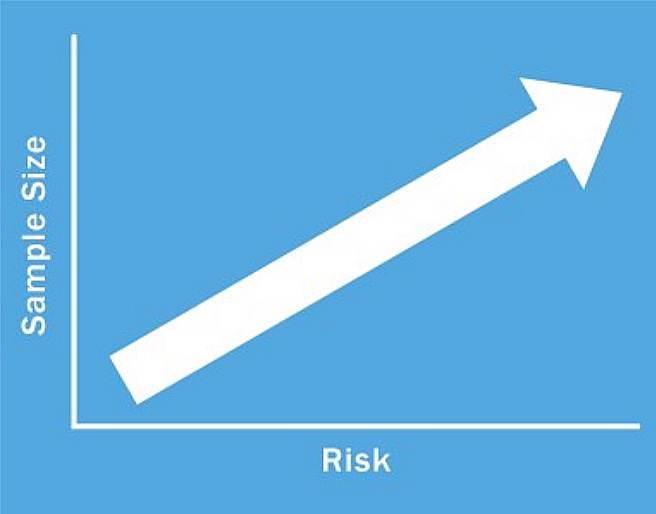Following is an article about the Risk-Based Approaches To Establishing Sample Sizes For Process Validation originally published in MED Device Online on June 14, 2016.
Using confidence, reliability, and acceptance quality limits (AQLs) to determine sample sizes for process validation are proven methods to ensure validation activities will yield valid results based upon an organization’s risk acceptance determination threshold, industry practice, guidance documents, and regulatory requirements. Figure 1 shows the relationship between risk and sample size — as the level of risk increases, the sample size increases accordingly.
Working with companies in FDA-regulated industries, I frequently see validations with inadequate sample sizes or otherwise without satisfactory statistical justification. This is due, in part, to engineers being thrown into the quality function without proper training or being told that “this is the way we have always done it”. This article is intended to provide background and guidance for people writing, executing, and summarizing validation protocols and reports.
Continue Reading…
Risk-Based Approaches To Establishing Sample Sizes For Process Validation…

